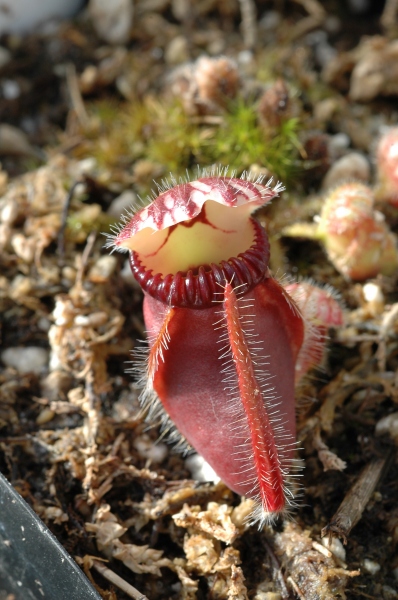Cephalotus is a monotypic genus of southwest Australian pitcher plants, containing a single carnivorous species Cephalotus follicularis, commonly called the Albany Pitcher Plant, the fly-catcher plant the mocassin plant, or the Western Australian Pitcher Plant.
The plant produces both non-carnivorous and carnivorous leaves, the latter looking something like small green moccasins.
Cephalotus are grown successfully around the world in cultivation. In their natural growing period (spring, summer, and the early months of autumn), they prefer warm day-time temperatures and cool night-time temperatures. In the cooler months of winter, they have a necessary dormancy period of about 3-4 months, where they often drastically slow or stop growth altogether.
During the critical dormancy period, it is important that the Albany pitcher plant receives a drastically reduced amount of water, enough to keep the soil just barely damp. This will help to prevent diseases and fungi which may set in and rot the rhizome and roots. As spring approaches, the plants will produce many non-carnivorous leaves, which are thought to aid in photosynthetic processes. In mid-spring, Cephalotus follicularis will start producing small, fuzzy knob-like structures, which, after a matter of weeks, will inflate and become the season's first set of pitchers. During this period, the growing season, the substrate must be kept damp to moist, however extremely well-drained, to help prevent root and rhizome rot.
Cephalotus follicularis tolerates many soil types, the most commonly used is a mixture of sphagnum peat moss, perlite, and sand used for propagation/horticultural purposes. A reasonable humidity (60-80%) is also preferred. Too high a humidity will encourage many pests to set in, such as scale, and diseases which cause the plant's crowns to rot. Too low a humidity is not tolerated as often the plant will wilt and close its lid (operculum). The plants become colorful and grow vigorously when kept in direct sunlight, while plants cultivated in bright shade remain green.
Propagate Cephalotus follicularis through leaf and root cuttings, and, as a much slower method, through seed. Pinch off the leaves (both carnivorous pitchers and non-carnivorous leaves may be used) from the base of the plant, while trying to keep as much of the whitish base intact as possible. These leaves are then placed upon milled sphagnum moss or a mixture of sphagnum peat/perlite/sand; small amounts of substrate are placed over the whitish base of the leaf. The leaves must receive bright light and remain covered to ensure high humidity. In many weeks plantlets will appear at the base of the leaves. Propagation from root cuttings is similar. Roots and parts of the rhizome can be cut into pieces an inch long and then treated similarly to the leaf cuttings. Propagation through seed is a much slower way, but is possible. Seed must first be stratified, where they are placed in cold, slightly damp conditions for 2-3 months before sowing upon milled sphagnum or a peat/perlite/sand mix in warm conditions, bright light, and high humidity. The seed may take from weeks to months to germinate, and will be extremely slow growing.


